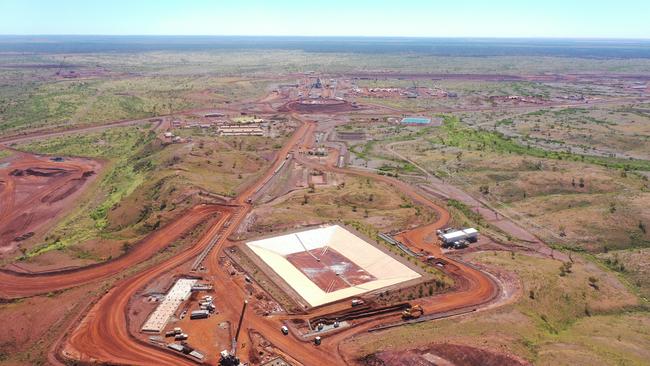Private 5G to ‘induce fourth industrial revolution’ as regulator reassess 20-year-old licences
The communications watchdog is reassessing 20-year-old spectrum licences, opening the doors for private operators to gain a greater share of the resource, despite telco warnings.

Australia’s communications regulator has opened the door to private 5G network providers potentially accessing more spectrum to “induce a fourth industrial revolution”, despite protestations from two of the big three telcos.
Many of the current 20-year spectrum licences issued to the nation’s telcos are set to expire between 2028 and 2032, prompting the Australian Communications and Media Authority to consider how the valuable asset will be best used.
Miners and port operators are among the early adopters of private 5 networks, which offer better reliability, coverage and the ability to handle more connected devices than Wi-Fi. But that is only the start, with hospitals, universities, manufacturers and farmers vying for access as they adopt more automation into their operations to turbocharge productivity and even cut carbon emissions.
It is a market valued at $130 million in 2021 and is predicted to grow almost 30 per cent annually over the next five years to be worth $695m, according to the regulator. Operators include Hewlett Packard Enterprise, Nokia and Ericsson.
Telcos have paid more than $8bn for various spectrum bands in the past eight years, and Telstra and TPG have argued reclaiming some spectrum for private networks is not in the public interest, and risked degrading mobile coverage for everyday Australians.
ACMA authority member and spectrum lead Adam Suckling said radio waves were a finite public resource, which the regulator manages to deliver the “most effective social, technological and economic outcomes”.
“We recognise that this is not a ‘greenfields’ exercise with the use of some frequency bands for a particular service, such as wireless broadband, not in contention. However, with around three-quarters of long-term spectrum licences expiring, it is timely to consider whether there is potential to enhance competition and provide more choice for consumers,” Mr Suckling said.
“These licences will significantly shape the future of Australia’s telecommunications landscape, so it’s important we include as many views in the decision-making process as we can.”
In a discussion paper, ACMA has highlighted the rise of private 5G networks, which it has granted operators access to via several methods. This includes the usual auction process – which the big mobile carriers also participate in bidding in some cases hundreds of millions of dollars for valuable blocks given demand often outstrips supply – and what is known as an “allocation window” and area-wide apparatus licences.
Essentially, AWLs are granted using a first in, first serve process. But the licensee can only use it in a small area. The licence fee is charged annually, and it is much cheaper than a public cellular licence.
AMCA noted the potential benefits of private 5G networks in its discussion paper. “According to some industry analysts and experts, private wireless networks will induce a fourth industrial revolution of highly automated and efficient production,” the regulator wrote.
“Governments are monitoring progress of the deployment of private networks and funding trials that include deploying private networks to encourage innovation. However, the rate of deployment will depend on both business demand for automation and – relevantly for ESL (expiring spectrum licence) considerations – access to spectrum.”
Pat Devlin, senior director at Aruba – which is owned by Hewlett Packard Enterprise – said there was a need for private networks, particularly in areas not covered by the big telcos.
“We’ve got vast tracts of Australia that I have very little coverage of any kind where businesses are operating. So you think about remote miners or remote ports. They need connectivity. And you know, the right kind of connectivity can be hard to come by. So private 5g has a place,” Mr Devlin said.
HPE Aruba chief technology officer Carlos Gomez Gallego said: “other countries have clearly demonstrated that removing the friction and reducing the cost associated with 5G spectrum for private use leads to much greater adoption of the technology”, particularly in smart manufacturing.
“As we Ahave seen with other wireless technologies, this can have such a positive impact on innovation, automation and efficiency across all verticals and industries,” he said.
“The low latency that a private cellular network offers enables the kind of automation where you’ve got these robots going around the floor, with millimetre turning speeds, to go and pick-up a package from one place and deliver it to another. Private cellular is just better suited to that kind of use case than Wi-Fi.”
Ericsson said private networks and 5G technology were “fundamental to industrial digitalisation and achieving net zero emission commitments, as well as creating safer environments for connected workers”. It cited a study which found that the use of smart technologies across transport, energy and agriculture could cut global emissions by 15 per cent
But TPG Telecom spokesman Mitchell Bingemann cautioned against carving up spectrum too much, warning it could potentially degrade mobile connectivity for everyday Australians.
“The mobile industry is underpinned by investment plans and spectrum licenses operating on decades-long cycles. Taking away spectrum from mobile operators to experiment with speculative alternatives will ultimately result in worse mobile services for all Australians,” he said.
“We need long-term planning to ensure the millions of Australian consumers and businesses who depend on mobile services can continue using their mobile phones today and into the future. It is critical we get this right, otherwise consumers will have to pay more for inferior mobile services in the coming decades.”
Telstra had a similar view, writing into a submission to ACMA late last year that reclaiming spectrum to enable new operators would curb the efficient use of the resource.
“The overall harm caused to those who currently use the public networks would not be offset by the increased benefits of the minority of the public who would benefit from the private network. As such, the overall public interest would be harmed,” Telstra wrote.
But Optus was supportive of private networks gaining some spectrum, particularly the 3.4–4.0 GHz band in remote areas, and 3.8 GHz band for metropolitan and regional areas.
“AWLs have also been allocated for millimetre wave spectrum (26 GHz). Optus is supportive of this process,” said Optus VP government and regulatory affairs Andrew Sheridan.
But he added: “The telco industry has invested heavily in spectrum licenses and infrastructure to support the essential communications services our modern society and economy relies upon”.
“Promoting service continuity and sustainability of investment through the spectrum reallocation processes will be critical objectives to achieving the future investment Australia needs in the communications sector.”






To join the conversation, please log in. Don't have an account? Register
Join the conversation, you are commenting as Logout